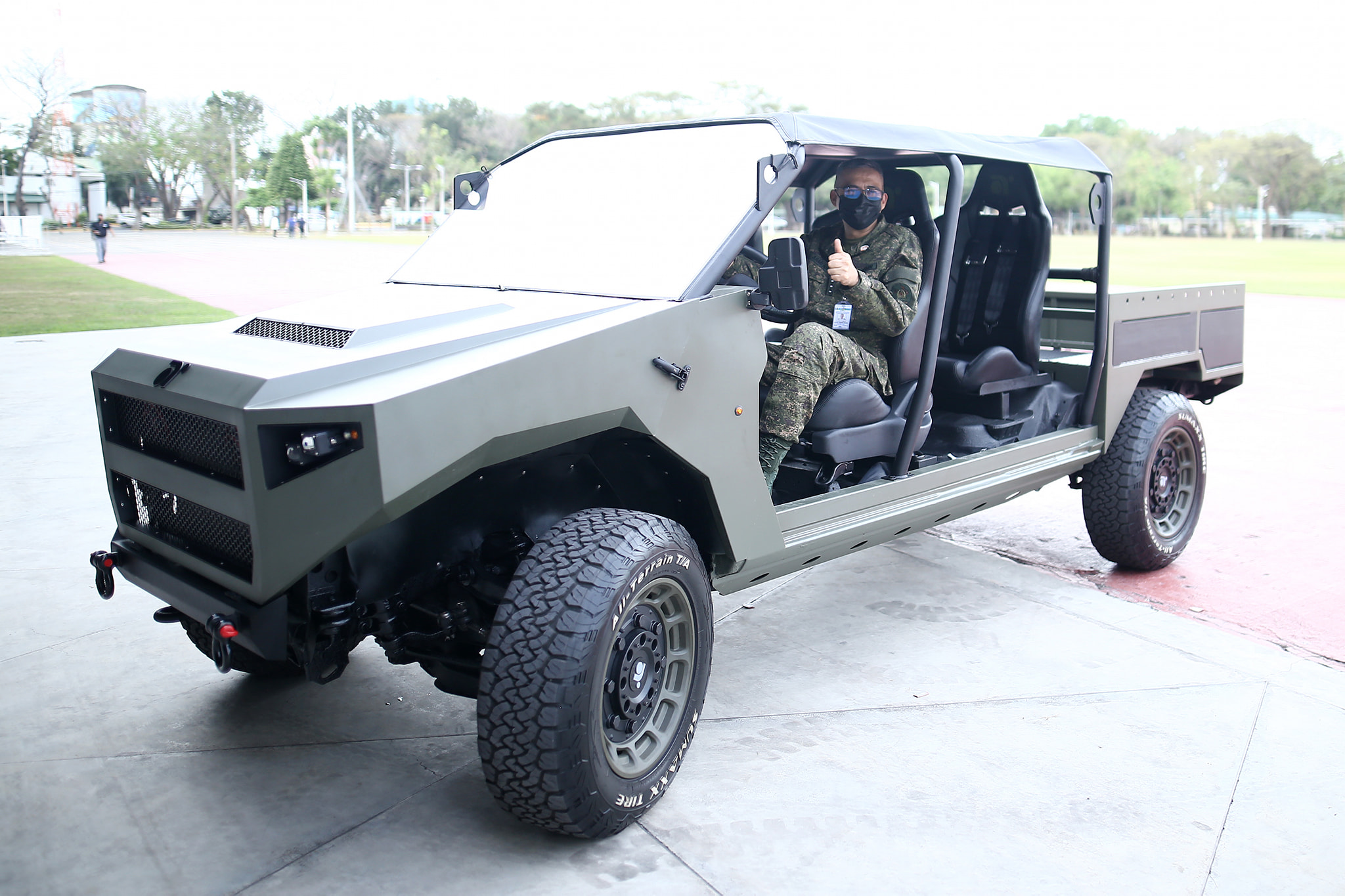The Philippine military, like many in the Indo-Pacific region, rely on imports from foreign industries for much of its equipment.
The local Malabon-based vehicle design and manufacturing firm Anos Research Manufacturing (ARM) is seeking to fill a small but important part of the military’s equipment inventory – the light tactical vehicle (LTV) – with an indigenous system.
ARM, also the country’s sole fire fighting vehicle manufacturer, has on its own initiative and funding developed the Squad Vehicle Charlie. It is intended to fill the multiple missions assumed by light tactical vehicles required by militaries including troop transport, logistics, reconnaissance, weapons carrier, command, ambulance and general utility tasks.
In fact, LTVs typically make up a major portion of any military’s motor transport fleet and are traditionally used not only by the Army, but also support roles for Navies, Air Forces and even law enforcement. So adopting a Philippine produced LTV would be a major program with significant local economic benefits and support advantages for the military forces. It might even offer potential export opportunities for the country itself.
Squad Vehicle Charlie initially debuted to the Philippine military officials at Camp Aquinaldo this Summer. The audience included Defense secretary Delfin Lorenza.

A 4 X 4 all-wheel powered design it was shown with seating for four with a rear open bed. With a weight of 2800 kg and a modular design, it is typical of modern LTVs which are intended to be able to be configured to address a range of roles.
It is equipped with a “2.8 to 3.0-litre turbo-diesel engine” providing 187 hp. It is suggested that this engine appears to be the Isuzu 4JJ3 engine which is also used in latest commercial D-Max and Mu-X. This and use of other proven and available commercial automotive components offers significant maintenance and support benefits to the military in the field. A six-speed manual transmission and high 235 mm ground clearance assures mobility in the most difficult conditions.
Although demonstrated in a light infantry/utility configuration with no doors, a canvas top, and open rear cargo bed the company made clear it can be designed in a variety of configurations. These include enclosed cab and even with Kevlar armour protection. The company continues to refine its design while continuing discussions with the Philippine military officials.
Typically, following such an initial demonstration the next step would be to undertake further hand-on government evaluations with additional pre-production version vehicles. Inquiries as to the possible scheduling of such evaluations remained so far unanswered.
by Stephen W. Miller












